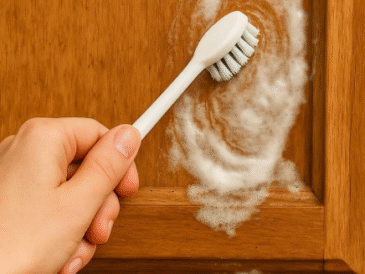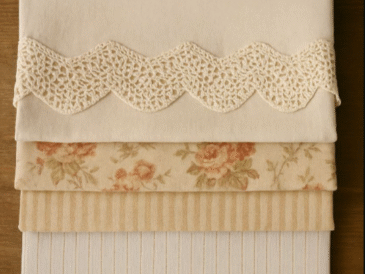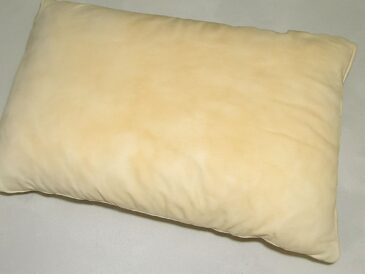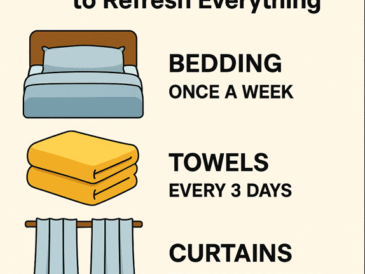When you walk into someone’s home, you can usually tell within seconds whether it feels clean. Maybe the pillows are perfectly fluffed, the kitchen counters are clear, and the air smells faintly of lemon. But here’s the truth — appearances can be deceiving.
A tidy home and a clean home are not always the same thing. One hides the mess; the other eliminates it. Understanding the difference can change the way you see your own space (and maybe help you spot a few cleaning shortcuts next time you visit a friend’s “spotless” house).
First Impressions Can Be Deceiving
We’ve all done it — the five-minute panic clean before guests arrive. You toss laundry into closets, light a candle, and pray nobody opens the wrong drawer.
The result? A house that looks immaculate but might still have crumbs under the couch and dust on the blinds.
It’s not about judgment — it’s about awareness. True cleanliness takes time, attention, and intention. And while tidiness pleases the eye, cleanliness keeps your space (and you) healthy.
Understanding the Difference Between Clean and Tidy
Let’s get one thing straight:
- Tidy means everything looks nice. Things are put away, and surfaces are clear.
- Clean means surfaces are actually free from dirt, bacteria, and grime.
You can organize your bookshelf beautifully while still having dust between the pages. You can stack dishes neatly in a cabinet that hasn’t been wiped down in months.
👉 The magic happens when tidiness and cleanliness come together — when your home both looks and feels fresh.
The Role of Scent in Perceived Cleanliness
Smell plays tricks on our brains. A whiff of lemon, lavender, or pine can instantly convince us something’s clean — even if it’s not.
But beware: strong air fresheners often mask hidden odors.
- Artificial scents can hide mustiness, pet smells, or kitchen grease.
- A truly clean home usually smells… neutral. Fresh air, mild detergent, maybe a hint of soap.
✨ Pro tip: If you can smell bleach or perfume but the air feels heavy, there’s probably more masking than cleaning happening.
Spotting Surface-Level Cleaning Tricks
Ah, the art of “surface-level cleaning.” It’s the go-to move before company arrives. A quick wipe here, a folded blanket there, and voilà — instant order.
But look closer.
- Are the baseboards dusty?
- Is there grime behind the faucet?
- Do shiny counters hide sticky cabinet handles?
Surface cleaning gives instant results, but it’s like applying makeup without washing your face first — it covers, not cures.
Hidden Corners, Forgotten Spaces
Every home has its secrets. Peek behind the door, under the couch, or above the fridge — that’s where truth lives.
These spaces gather dust, cobwebs, and forgotten crumbs. The clutter you don’t see still exists; it’s just… hiding.
🧹 Mini Test: Run your hand along the top of a door frame or behind a lamp. If it feels gritty, it’s time for a deep clean — not just a tidy-up.
Bathroom Truth Test – The Cleanest Room Never Lies
If you really want to know how clean a home is, skip the living room and check the bathroom.
A tidy bathroom might have a folded towel and a shiny mirror.
A clean bathroom, though, has spotless grout, a fresh-smelling toilet, and zero mildew.
Look at:
- Faucet bases (a favorite grime zone).
- Shower corners.
- Under the sink (the forgotten storage abyss).
Bathrooms tell the truth — every single time.
Kitchen Clues – Where the Real Cleaners Shine
Kitchens are where the difference between “tidy” and “clean” becomes obvious.
- Countertops might be clear, but check for sticky residue near handles.
- Are cabinet doors greasy near the stove?
- Is the microwave spotless or full of last night’s spaghetti art?
Clean kitchens sparkle in small details: inside appliances, beneath toasters, and along backsplash tiles. If those shine, you’re in a genuinely clean home.
Dust, Pet Hair, and Tiny Telltales
Dust and pet hair are like the detectives of cleanliness — they always reveal the truth.
Even with organized shelves, a light swipe of a finger can tell you everything.
- Dust on TV stands, picture frames, or blinds means the cleaning was visual, not physical.
- Pet hair on furniture suggests tidying happened, but not vacuuming.
You can’t fake “dust-free” — it’s either done or it’s not.
Floors and Carpets – Beyond Vacuum Lines
Ah yes, the comforting sight of vacuum lines — the visual cue of “clean.”
But those lines lie.
If you check the corners or under furniture and find dirt or crumbs, it means only the visible parts got love.
On hard floors, sticky patches or dull areas are another clue.
A clean floor doesn’t just look good — it feels good under bare feet and smells fresh, not perfumed.
Windows and Mirrors – The Reflective Test
Want to know how much care goes into a home? Check the mirrors.
Fingerprints, streaks, and dust are instant giveaways of a rushed clean.
In contrast, clean windows and mirrors bounce light beautifully, making the entire home feel airy and bright.
It’s a small detail that signals big effort — and it makes all the difference.
The Art (and Effort) of Genuine Cleanliness
True cleanliness isn’t about perfection — it’s about consistency.
It’s sweeping today so you don’t need to scrub tomorrow. It’s wiping down after cooking instead of deep-cleaning once a month.
And more than that, it’s about care — for your space, your health, and your peace of mind.
When your environment is clean, your brain relaxes. You breathe better. You think clearer. It’s not vanity; it’s self-care disguised as housework.
Conclusion – Beyond Appearances: Appreciating True Clean
Next time you visit someone’s “perfect” home (or look around your own), notice the little things — the gleam of a faucet, the clarity of a mirror, the freshness of the air.
True cleanliness isn’t a show; it’s a habit. It’s the quiet, unseen effort behind the scenes — the daily dedication that keeps a home not just looking nice, but feeling alive.




